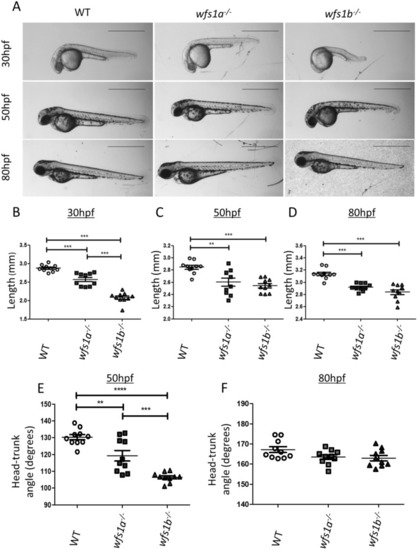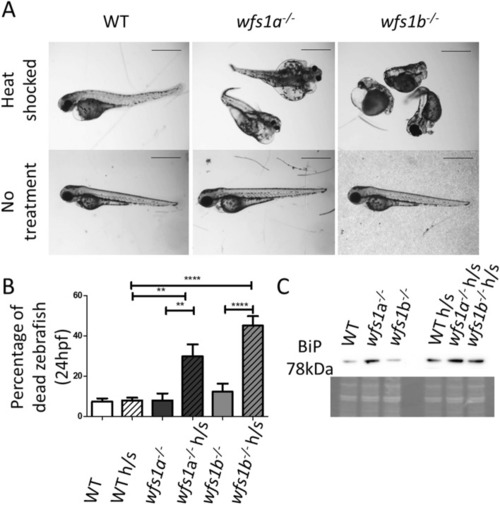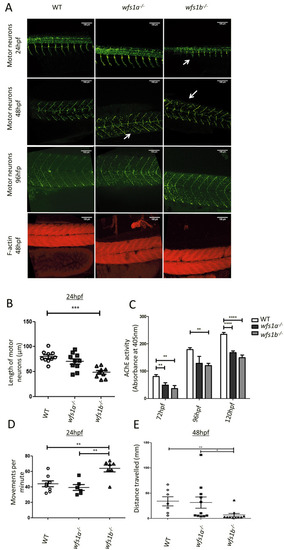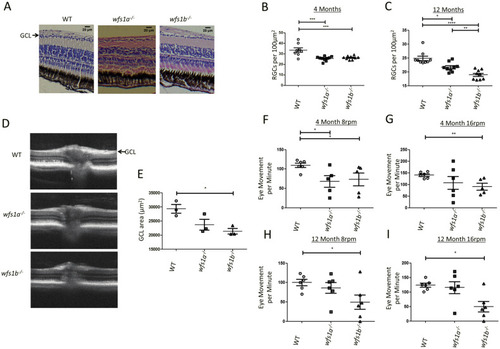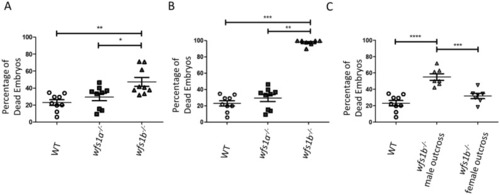- Title
-
A mutant wfs1 zebrafish model of Wolfram syndrome manifesting visual dysfunction and developmental delay
- Authors
- Cairns, G., Burté, F., Price, R., O'Connor, E., Toms, M., Mishra, R., Moosajee, M., Pyle, A., Sayer, J.A., Yu-Wai-Man, P.
- Source
- Full text @ Sci. Rep.

ZFIN is incorporating published figure images and captions as part of an ongoing project. Figures from some publications have not yet been curated, or are not available for display because of copyright restrictions. |
|
Phenotypic analysis of PHENOTYPE:
|
|
Effects of the unfolded protein response in EXPRESSION / LABELING:
PHENOTYPE:
|
|
Neuronal development in |
|
Retinal ganglion cell count and visual function in PHENOTYPE:
|
|
Fertility of |

Unillustrated author statements PHENOTYPE:
|

